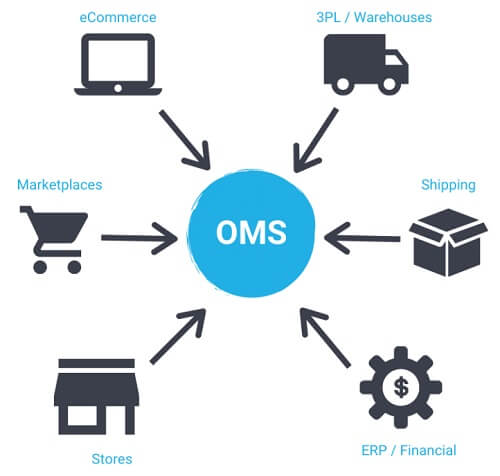Key Considerations to Maximize
Your Next Order Management Evaluation
Order management plays a critical role in the success of any ad sales organization. The ability to efficiently capture, process, and fulfill customer orders can significantly impact customer satisfaction and overall business performance. To leverage the full potential of order management, properly evaluating and selecting the right software solution is essential.
This post will explore key considerations to maximize your next order management evaluation and help you enhance your organization’s order management capabilities.
- Understand Your Order Management Processes
Before diving into the evaluation process, it’s crucial to have a comprehensive understanding of your current order management processes. Identify your organization’s specific requirements and challenges, such as order capture, fulfillment path optimization, order maintenance tracking, order adjustments management, and billing integration. This clarity will enable you to evaluate software solutions that align with your unique business needs. As this is one of the most critical steps in the process, consider working with a strategic consulting partner like V2 to help analyze your current state, develop a vision for the future, and deliver clarity through an upfront blueprinting exercise.

2. Define Evaluation Criteria
Establishing clear evaluation criteria is essential to ensure you select an order management solution that meets your business objectives. Consider key evaluation factors such as:
- Supported industries and look-a-like customers
- Ease of use and overall user experience
- Customization capabilities
- Integration capabilities
- Mobile and offline capabilities
- Reporting and analytics
- Security options
- Vendor product roadmap
- Vendor support options
- Pricing including licensing, implementation costs, and ongoing maintenance costs
For media organizations specifically, consider these additional factors:
- Flexibility to support multiple ad types
- Media plan generation capabilities with customizable templates
- Content splits and creative targeting capabilities
- Rep splits and commissions logic
- Custom fiscal calendars for revenue recognition separate from invoice schedules
- Pre-authorization of credit cards for processing
- Tiered rate cards and automatic pricing adjustments
- Order adjustment capabilities for (e.g., in flight changes, make goods, etc.)
- Third-party data reconciliation
- Inventory management
- Billing integration
Overall, it’s critical to consider the cross-section of order management features, pricing, and timing–while cheaper solutions may be more favorable, capabilities may be limited and require investment in additional niche solutions to create a full solution, such as middleware. Additionally, time to implement is critical to understand, particularly if you have an upcoming compelling event, such as an expiring OMS contract or retirement of an existing, legacy solution. By defining and prioritizing your evaluation criteria upfront, you can focus on solutions best suited to your specific requirements.
- Evaluate Flexibility and Customization
Every organization has its own unique order management process, and media organizations typically have even more complexity, requiring a robust ad product catalog and accompanying rules and approval workflows to support the collaboration between sales and ad operations. Media organizations should explore order management solutions that offer a high-degree of flexibility and customization options to adapt to their ad sales model. Customers should consider current offerings and ad products on the horizon, such as print, digital, event, out-of-home, social, Web3 and other ad types. The ability to configure the software to match existing ad sales and order management processes upfront, as well as the ability to easily make adjustments over time as the business evolves will be crucial for maximizing efficiency and effectiveness.

- Integration Capabilities
Seamless integration with other systems, such as your upfront CRM or downstream inventory management, fulfillment and billing systems, is vital for streamlined order management. Evaluate the integration capabilities of the order management software to ensure it can seamlessly communicate and exchange data with other key systems in your technology ecosystem. Integration capabilities are critical to prevent duplicate data entry, minimize order errors, and optimize the end-user experience for your ad sales, ad operations, and billing teams.
- Scalability and Performance
Consider the scalability and performance capabilities of order management solutions. As your business grows, the software should be able to handle increased data and order volumes, complex workflow processing, and additional enhancements. Scalability ensures the solution can grow alongside your organization without compromising efficiency or the ultimate customer experience.
- User-Friendliness and Training
A user-friendly order management system will facilitate adoption and minimize training time for your teams. Evaluate the software’s interface, navigation, and overall user experience. Look for solutions offering intuitive workflows, contextual help and guided flows, and readily available training resources to ensure your team can quickly adapt to the new system and maximize its capabilities.
- Vendor Support and Roadmap
Consider the support and future roadmap of the order management software vendor. Evaluate the vendor’s reputation, experience, and customer support offerings. A reliable vendor will provide ongoing support, regular updates, and a roadmap for future enhancements to ensure your order management solution remains up-to-date and aligned with evolving industry standards.
One of the biggest challenges our clients face when it comes to order management is working with order management vendors that are not designed to support a multi-faceted media revenue model. It is important to work with a vendor that can support configuration and automation around multiple ad types.
Maximizing your order management evaluation requires a comprehensive understanding of your organization’s unique requirements and a diligent assessment of potential software solutions. By considering factors such as user-friendliness, flexibility, integration capabilities, scalability, analytics, and vendor support, you can identify an order management solution that aligns with your business objectives and enhances your ability to capture, fulfill, and track customer orders efficiently. Implementing the right order management software will empower your teams and help your organization achieve maximum efficiency and effectiveness.
Building Trust Starts With A Conversation.
Reach out today to learn more about how V2 supports its media customers with the Order Management evaluation and implementation process.


